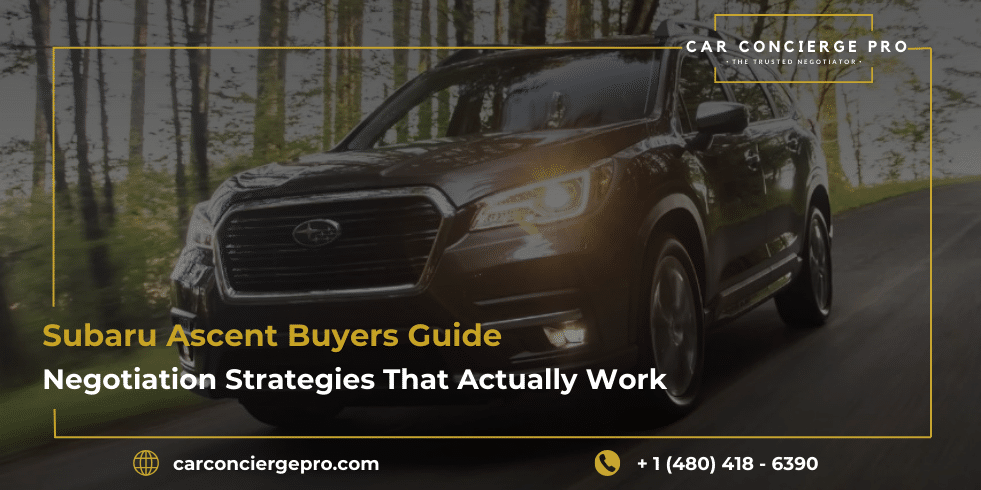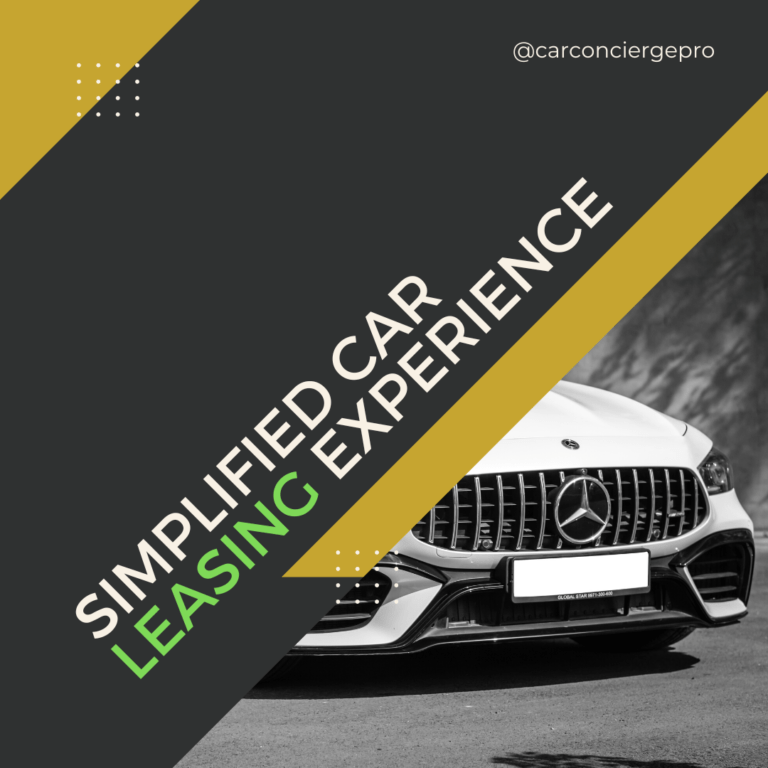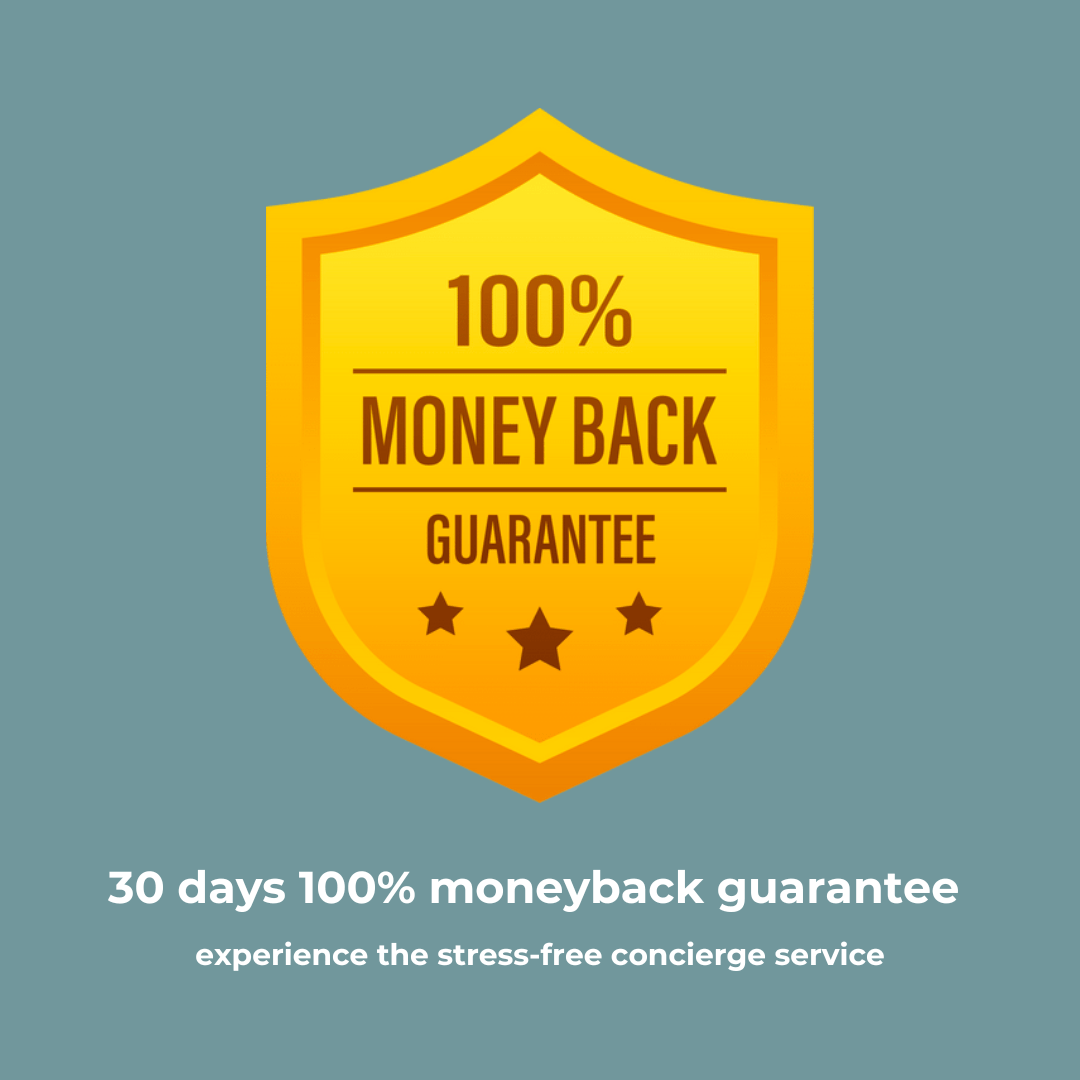The Subaru Ascent is a standout in the mid-size SUV segment, offering seating for up to eight, advanced safety features, and a blend of comfort and utility for families and adventure seekers alike. With its spacious interior, standard all-wheel drive, and fuel-efficient engine, it’s no surprise that the Ascent attracts attention across the country. Yet, many buyers face uncertainty when it comes to paying the right price.
Securing a fair deal on a Subaru Ascent requires more than walking into a dealership. Understanding pricing structures, researching market trends, and implementing proven negotiation strategies can save thousands. Whether you’re considering a base model or a fully loaded trim, this guide provides actionable steps to help you approach your purchase with confidence.
By the end of this article, you will know how to analyze MSRP vs. invoice price, leverage online tools, compare dealership offers, time your purchase, negotiate effectively, and finalize financing. This comprehensive strategy ensures that you pay a competitive price while securing the Subaru Ascent that meets your needs.
Table of Contents
ToggleUnderstanding Subaru Ascent Pricing
MSRP vs. Invoice Price
The Manufacturer’s Suggested Retail Price (MSRP) represents Subaru’s recommended price for a particular Ascent trim. While it serves as the official “sticker price,” it is generally just the starting point for negotiations rather than the final deal. Understanding the MSRP allows buyers to approach discussions with realistic expectations, recognize inflated dealer markups, and spot genuine value opportunities.
The invoice price, on the other hand, is what the dealer actually pays Subaru for the vehicle. It generally falls below MSRP, depending on options and trim. Knowing the invoice price gives buyers leverage, as dealerships often have room to negotiate down toward this baseline. This knowledge empowers buyers to make informed offers without undervaluing the dealer’s position.
Recognizing the gap between MSRP and invoice price helps you develop a starting offer that is both strategic and favorable. By using the invoice as a benchmark, you can negotiate with confidence and reduce the risk of overpaying for a Subaru Ascent. This approach promotes a balanced deal while keeping the negotiation process professional and respectful.
True Dealer Cost Explained
The true dealer cost includes the invoice price plus additional charges, minus any manufacturer holdbacks or dealer incentives. Holdbacks are small percentages of MSRP or invoice returned to the dealer after the sale, which effectively lowers their real cost. Being aware of these components allows buyers to better gauge how much flexibility the dealer has in negotiations.
Knowing the true dealer cost gives you insight into the lowest possible price a dealership may accept. While you may not reach this exact figure, it establishes a benchmark and helps shape your negotiation strategy. This benchmark helps you make informed counteroffers and avoid overpaying.
Additionally, dealerships may receive volume bonuses or manufacturer promotions that reduce their effective cost. Understanding these factors ensures your offer is competitive and grounded in realistic pricing expectations. Considering these incentives can give you an extra edge when finalizing your deal.
Researching Market Value
Utilizing Online Tools
Websites like Edmunds, Kelley Blue Book, and TrueCar provide valuable insights into Subaru Ascent pricing. These platforms show average transaction prices, MSRP, invoice prices, and regional variations, helping you identify what a fair deal looks like.
You can also compare different trims and packages, such as the base Ascent Premium versus the top-tier Ascent Limited. Filtering results by location ensures you understand local pricing trends and how dealerships may differ in their offers.
Online tools often feature payment calculators and financing estimates, which can help determine the total cost of ownership. Being armed with this data strengthens your position at the dealership and allows for confident negotiations.
Comparing Local Dealerships
Not all dealerships price the Subaru Ascent equally. Some may offer deeper discounts or better incentives than others. Gathering quotes from multiple dealers gives you leverage and lets you compare offers objectively.
Make sure that all quotes reflect the same trim, options, and accessories. This ensures a fair comparison and prevents confusion when presenting competitive offers during negotiation.
Additionally, comparing dealerships can uncover special promotions like loyalty rebates, seasonal incentives, or local dealer discounts. Combining this knowledge with negotiation tactics increases your chances of securing the best deal possible.
Timing Your Purchase
Best Times to Buy a Subaru Ascent
Timing can significantly influence the price you pay. End-of-month or end-of-quarter periods are ideal, as dealers aim to meet sales quotas and may offer additional discounts. During these periods, sales managers are often more willing to negotiate, which can result in better trade-in values and promotional incentives. Timing your visit strategically can give you a tangible advantage over casual buyers.
The end of the year is another strategic period. Dealers often want to clear current-year models for incoming inventory, which can create opportunities for savings on both base and fully loaded trims. Additionally, dealerships may offer special financing deals or cash-back incentives to accelerate year-end sales, giving buyers more flexibility. Planning your purchase around these periods maximizes your potential savings.
Shopping on weekdays, particularly Mondays and Tuesdays, can result in more personalized attention from sales staff. Less busy showrooms allow for focused negotiation and potentially better deals on the Subaru Ascent. You can take more time to test drive, ask detailed questions, and review financing options without feeling rushed. A quieter environment often leads to more favorable treatment and attention to detail from the dealer.
Seasonal Discounts and Incentives
Subaru frequently offers seasonal promotions, such as cashback offers, low-interest financing, or lease specials. Aligning your purchase with these incentives can reduce costs significantly. Being aware of these promotions ahead of time allows you to plan your visit and negotiate more effectively.
Holiday events like Memorial Day, Labor Day, and year-end sales often coincide with manufacturer-backed deals. Dealers may also run local promotions to move inventory, providing additional savings opportunities. Combining these events with a solid understanding of MSRP and dealer cost can further enhance your bargaining power.
Stay informed by checking dealership websites, subscribing to email alerts, and consulting online pricing guides. Combining seasonal incentives with other negotiation strategies maximizes your potential savings. Regularly monitoring these sources ensures you don’t miss short-term offers that could significantly lower your final price.
Negotiation Tactics for the Subaru Ascent
Starting Below MSRP
Begin negotiations slightly below MSRP to create room for the dealer to counteroffer. This strategy allows the final price to move closer to the dealer’s actual cost without offending sales staff. Starting conservatively also gives you flexibility to adjust your offer during the discussion and demonstrates that you are a savvy, informed buyer.
Base your initial offer on invoice prices and market research, ensuring it’s realistic and informed. Demonstrating knowledge can earn respect and improve the likelihood of a fair deal. Including recent sales data or competitor pricing can further strengthen your position and show that your offer is backed by concrete information.
Always remain polite and professional. A reasonable starting point sets the tone for constructive negotiation and helps you secure a competitive price. Maintaining a calm, respectful demeanor can encourage the salesperson to be more cooperative and receptive to your counteroffers.
Leveraging Multiple Offers
Presenting quotes from multiple dealerships can motivate a dealer to match or beat the best offer. Competition encourages them to provide their most favorable pricing. It also gives you leverage to negotiate add-ons, financing terms, or trade-in values more effectively, as dealers don’t want to lose the sale.
Ensure all offers match in trim, options, and packages to make them comparable. For example, compare the Ascent Premium with the same package across different dealers to validate competitive pricing. Accurate comparisons prevent misunderstandings and help you focus on genuine value differences rather than superficial price gaps.
This tactic signals that you are an informed buyer. Dealers recognize competition and are more likely to negotiate aggressively to secure your purchase. Documenting each quote in writing or email strengthens your credibility and provides a clear reference point during negotiation discussions.
Avoiding Add-Ons and Unnecessary Fees
Dealers may attempt to include optional add-ons, extended warranties, or documentation fees that inflate the total cost. Carefully review the contract to spot these charges. Pay close attention to items bundled into the price, as some may be automatically included but not essential, and question any ambiguous line items.
Decline or negotiate fees that are unnecessary for your needs, such as paint protection or fabric treatments. This step can save hundreds of dollars without compromising the vehicle itself. Being prepared with a clear list of what you do and don’t want allows you to firmly but politely refuse unnecessary extras.
Being vigilant demonstrates that you are a knowledgeable buyer, ensuring the final price only reflects agreed-upon terms. Clear communication about fees prevents surprises at signing. This approach also signals to the dealer that you are serious, making them more likely to respect your boundaries and honor your negotiated price.
Financing and Leasing Options
Understanding Financing Terms
Investigate current interest rates, loan terms, and dealer financing promotions before stepping into the dealership. This knowledge allows you to spot competitive offers and steer clear of costly loans. By comparing multiple lenders, you can secure the most favorable rates and avoid being restricted to dealer-only financing, which often comes with higher expenses.
Getting pre-approval from a bank or credit union provides strong leverage in negotiations. Dealers are more likely to offer competitive rates when they know financing is already secured, and it keeps the focus on the vehicle’s price rather than monthly installments. It also sets a clear budget upfront, enabling you to negotiate with confidence and avoid the stress of last-minute financing decisions.
Review your credit score and assess different loan term options before finalizing financing. A strong credit score typically unlocks lower interest rates, while the decision between a short-term or long-term loan influences your overall repayment cost. These precautions help ensure your loan fits both your budget and future financial plans. By calculating the total interest payable across the loan term, you can compare lenders more effectively and avoid surprises in your monthly payments.
Exploring Lease Deals
Leasing the Subaru Ascent may be ideal for those seeking lower monthly payments or a new car every few years. Pay attention to residual values, money factor, and mileage limits when evaluating lease offers. Understanding these terms helps you compare lease deals accurately and avoid unexpected charges for excess wear or mileage overages.
Calculate the total cost of the lease, including upfront fees, monthly payments, and end-of-lease charges. This ensures you understand the complete financial impact of leasing. Considering the full financial picture prevents surprises at lease-end and helps determine whether leasing or financing is the more cost-effective option for your situation.
Manufacturer-backed lease promotions or loyalty incentives can further reduce costs. Aligning leasing options with personal goals and budget ensures the chosen plan is practical and cost-effective. Additionally, reviewing early termination penalties and purchase options at lease-end provides flexibility and protects you from potential financial pitfalls.
Finalizing the Deal
Reviewing the Contract
Review every detail of the contract thoroughly prior to signing. Verify that the final price, financing details, and promotions are correctly documented in the contract. Take your time reading each section—rushing through could result in missed errors that might become costly later.
Check for unexpected fees or add-ons. Negotiate or remove any charges that were not previously discussed to avoid inflated costs. Pay special attention to dealer-installed accessories, documentation fees, and extended warranties, which are often optional.
Bring a checklist of negotiated points to cross-reference with the contract. This step ensures all promises, discounts, and incentives are properly documented and avoids post-purchase surprises. Confirm that rebates, trade-in values, and any special offers are correctly applied.
Additionally, ask questions about any ambiguous clauses. Clarifying unclear terms upfront prevents misinterpretation and protects you from hidden costs. A thorough review establishes confidence before completing the purchase.
Ensuring All Terms Are Met
Verify that all verbal agreements are included in the written contract. Dealers may omit perks or discounts if not explicitly documented. Make sure any special incentives, free maintenance offers, or additional add-ons promised during negotiation appear clearly. Double-check that dates and conditions for these offers are specified to prevent confusion later.
Double-check financing terms, trade-in values, and optional services. Mistakes at this stage can affect total cost or monthly payments. Ensure interest rates, loan duration, and monthly installments match what was discussed. Confirm that all calculations are accurate and reflect any negotiated discounts or rebates.
Keep copies of all documentation, including invoices, contracts, and correspondence. This ensures protection in case of disputes and provides peace of mind as a buyer. Organizing these documents also helps track warranty coverage, service records, and future reference. Storing these documents securely also makes future resale or trade-in negotiations smoother.
Finally, confirm delivery conditions, such as vehicle inspection and registration. Ensuring that the Subaru Ascent is delivered as agreed and meets all specifications avoids complications after the sale. Clear documentation of these details strengthens your position if any issues arise. Inspect the vehicle thoroughly at delivery to verify condition and confirm that all requested features and accessories are included.
Conclusion
Negotiating the price of a Subaru Ascent requires preparation, research, and a clear strategy. Understanding the MSRP, invoice price, and dealer cost provides a solid foundation, while awareness of local market trends ensures your offers remain realistic and competitive. Being well-prepared also builds confidence during discussions, helping you negotiate firmly without hesitation.
Timing your purchase strategically—such as at the end of the month, quarter, or year, or during seasonal promotions—can create opportunities for additional savings. Shopping on weekdays and staying informed about ongoing incentives further strengthens your bargaining position. Aligning your timing with dealership priorities can result in added perks or flexible terms that enhance overall value.
Effective negotiation also involves starting below MSRP, leveraging multiple offers, and reviewing contracts carefully to avoid unnecessary fees. Exploring financing or leasing options in advance ensures your plan aligns with your budget. With patience, preparation, and informed decision-making, you can secure a Subaru Ascent that meets your needs while maximizing value and minimizing stress. Ultimately, combining knowledge, timing, and strategy empowers you to drive away with confidence and satisfaction.
FAQs
- What is the typical discount off MSRP for a Subaru Ascent?
Discounts on the Subaru Ascent can vary depending on the dealership, trim, and region. Many buyers have reported savings of up to $4,000 off MSRP when timing their purchase strategically. End-of-month or end-of-year periods often provide the most favorable pricing. Comparing offers from multiple dealerships can also give you leverage. Being informed about invoice prices and current incentives ensures you negotiate effectively. - How can I find the invoice price of a Subaru Ascent?
Websites like Edmunds, Kelley Blue Book, and TrueCar provide estimated invoice prices for the Subaru Ascent. This information shows what the dealer actually pays for the vehicle, giving you a realistic baseline for negotiation. Knowing the invoice price helps you determine a fair offer without overpaying. It also provides leverage when combined with dealer incentives or holdbacks. - Is it better to lease or finance a Subaru Ascent?
Leasing a Subaru Ascent provides lower monthly dues and the ability to transition to a newer model every few years. Financing, on the other hand, allows you to build equity and ultimately own the vehicle. Your spending limit, driving style, and long-term goals will determine which option is best for you. Weighing the entire costs, including financing rates, residual values, and potential mileage penalties, is crucial. You may make a wise financial decision that fits your lifestyle by carefully weighing your options. - When is the best time to buy a Subaru Ascent?
When dealerships are attempting to reach sales targets at the end of the month, quarter, or year, it’s usually the greatest time to buy. Weekday shopping, particularly in the mornings, can also lead to more individualized attention and increased negotiating power. Costs may be further decreased by clearance discounts, holiday specials, and seasonal incentives. Using timing strategically improves your chances of getting a good deal without hurrying. - What should I do if a dealer adds unexpected fees?
Always review the contract carefully for additional charges, including documentation fees, dealer add-ons, or extended warranties. Question any fees that were not discussed during negotiation and request adjustments or removal. Understanding which charges are standard and which are optional prevents overpaying. Being proactive ensures transparency and avoids surprises at the final signing. - Is it possible to negotiate the price of a Subaru Ascent online?
Yes, many dealerships now allow negotiations via email, phone, or online chat. This approach lets you compare offers from multiple dealers without visiting each in person. Online negotiation can also give you a written record of quotes, which strengthens your position during final discussions. Being prepared with invoice pricing and promotions enhances your leverage. - Are there incentives for military members or students on the Subaru Ascent?
Subaru often provides special rebates or financing offers for military personnel, veterans, and students. These incentives can reduce the vehicle’s purchase price or offer lower financing rates. Availability varies by region and dealership, so it’s important to confirm current promotions locally. Combining these incentives with negotiation strategies can maximize savings.




 and Canada
and Canada 




